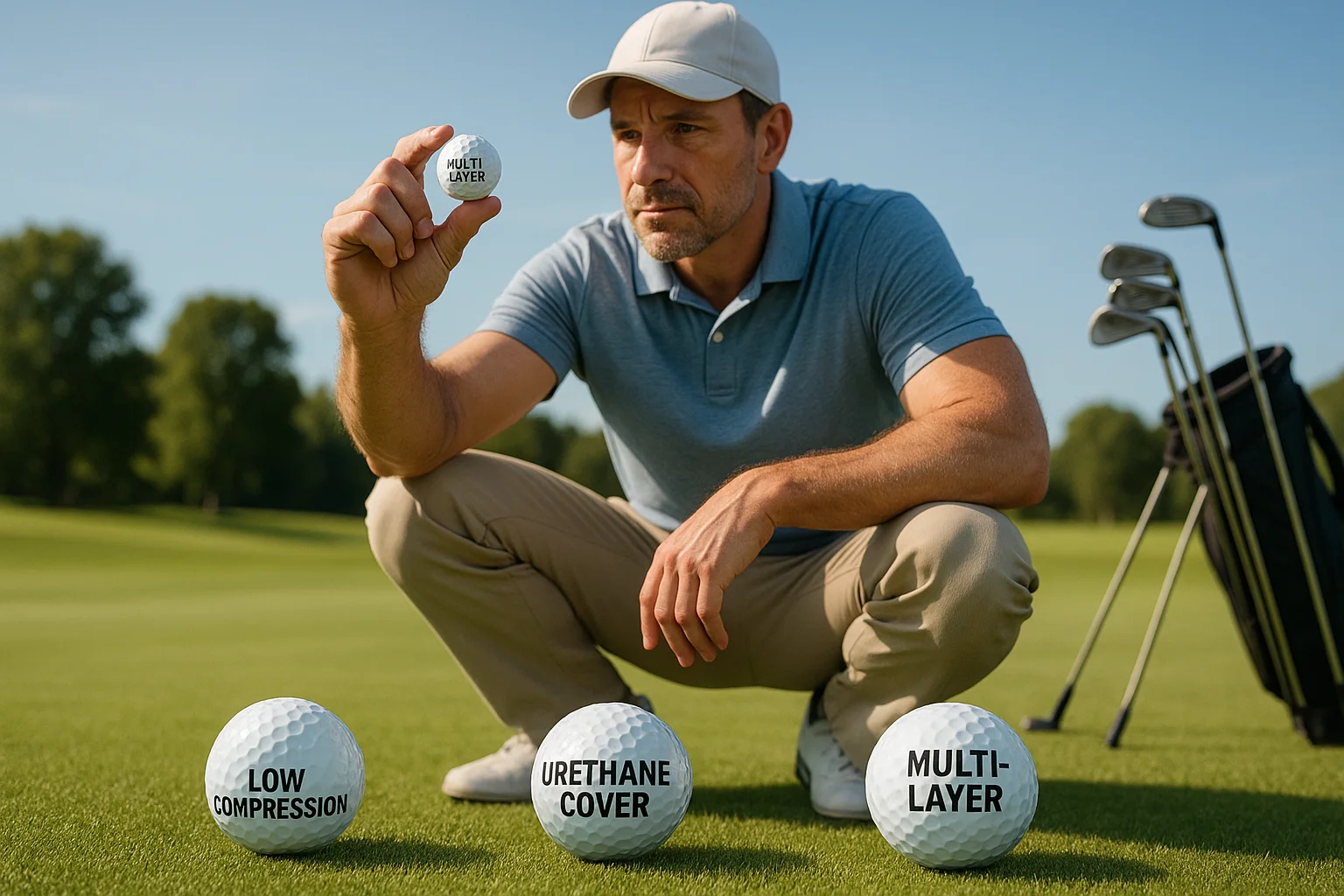
Golf balls are essential to the game since they impact distance, control, and feel. Choosing the right ball can improve consistency for the average golfer without breaking the bank.
These balls balance performance factors appropriate for intermediate players seeking improvement throughout their rounds.
Golf balls come in various categories: distance balls and premium tour balls, for example.
For the average golfer, balance in distance, spin, and durability is most effective while not needing to rely on precise swing mechanics.
These attributes are greatly influenced by compression, cover material, and spin control.
It is essential to pay attention to compression rating, ball cover type (urethane or ionomer), and pricing when picking a golf ball.
While compression affects how a ball responds to a player’s swing, the cover influences the feel and spin.
Matching a player’s swing speed and playing style with the appropriate ball enhances both comfort and precision in the game.
Table of Contents
A List Of 7 Best Golf Balls
To address the question ‘What golf ball should I use?’, we have identified the best golf ball brands. Many players prefer the leading brands included in our list. They are rated and valued for offering unrivalled performance and value; thus, they are best suited for intermediate golfers.
TaylorMade Distance+ Golf Balls
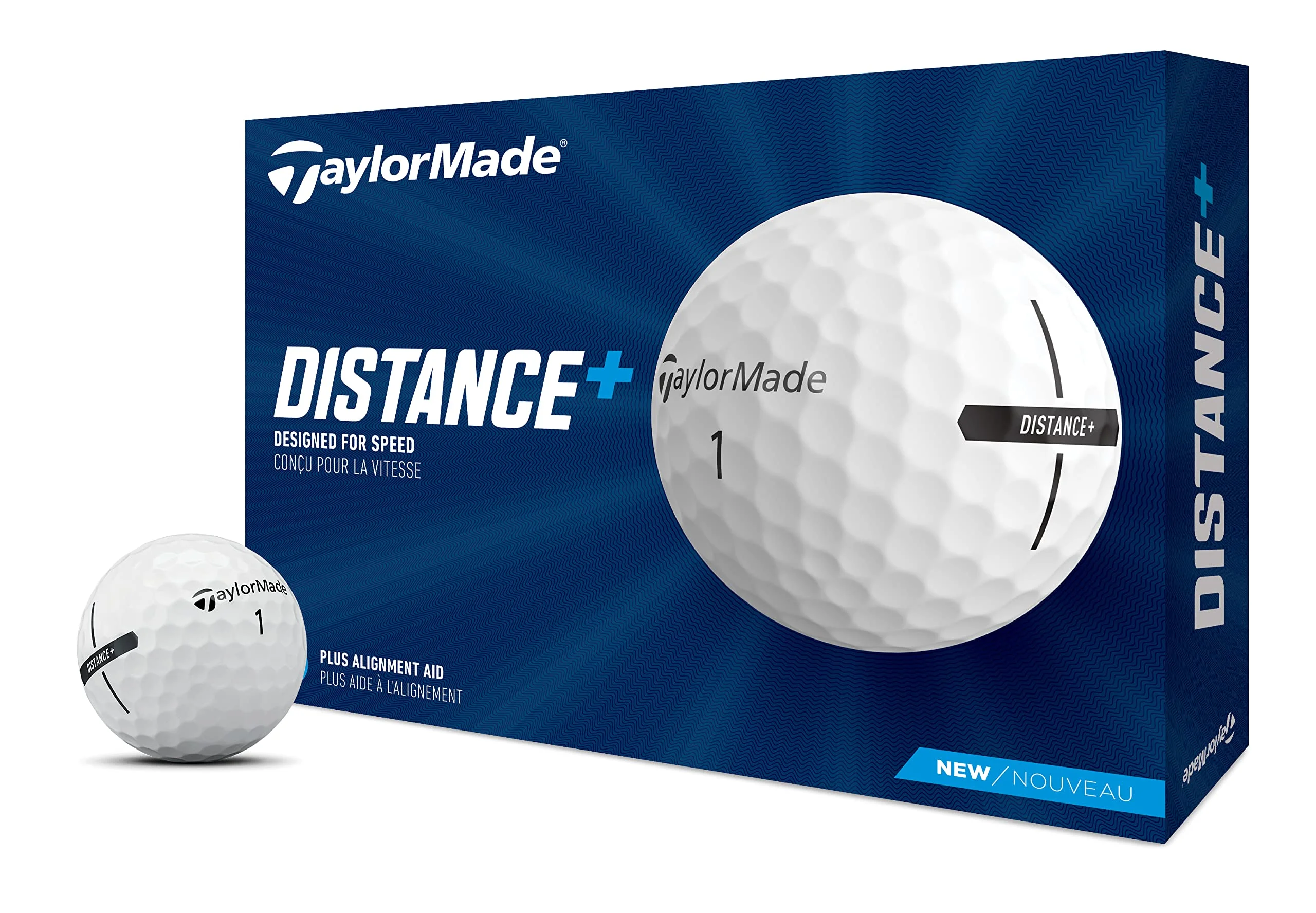
*Affiliate link. The price may vary.
These golf balls provide reliable distance accuracy and stable flight for recreational golfers who are cost-conscious while working to enhance their skills.
Pros
- Significant distance increases due to the REACT Speed Core technology
- 343-dimple pattern ensures stable distance and flight accuracy even in windy conditions
- Alignment aids assist in targeting an accurate shot and putt
Cons
- Feels firmer than softer premium balls
- Average control for backspin near the green
- Slightly less durable cover for frequent play
Compared to other mid-priced golf balls we have tried, we noticed the Distance+ balls have increased length off the tee.
The new 342-dimple design does a great job of keeping the ball flight straighter, especially when it’s windy.
The putter’s built-in alignment aid made aiming simpler at the green, which made it easier to line up.
The feel on full shots is on the firm side, yet still comfortable. This Distance+ ball will be great for golfers looking for distance who do not want a super soft ball.
While we found the spin around the greens to be less responsive than soft-cover balls, the reliability of these balls, given their performance on fairways and in the air, makes them a dependable choice.
Callaway Supersoft Golf Balls Red
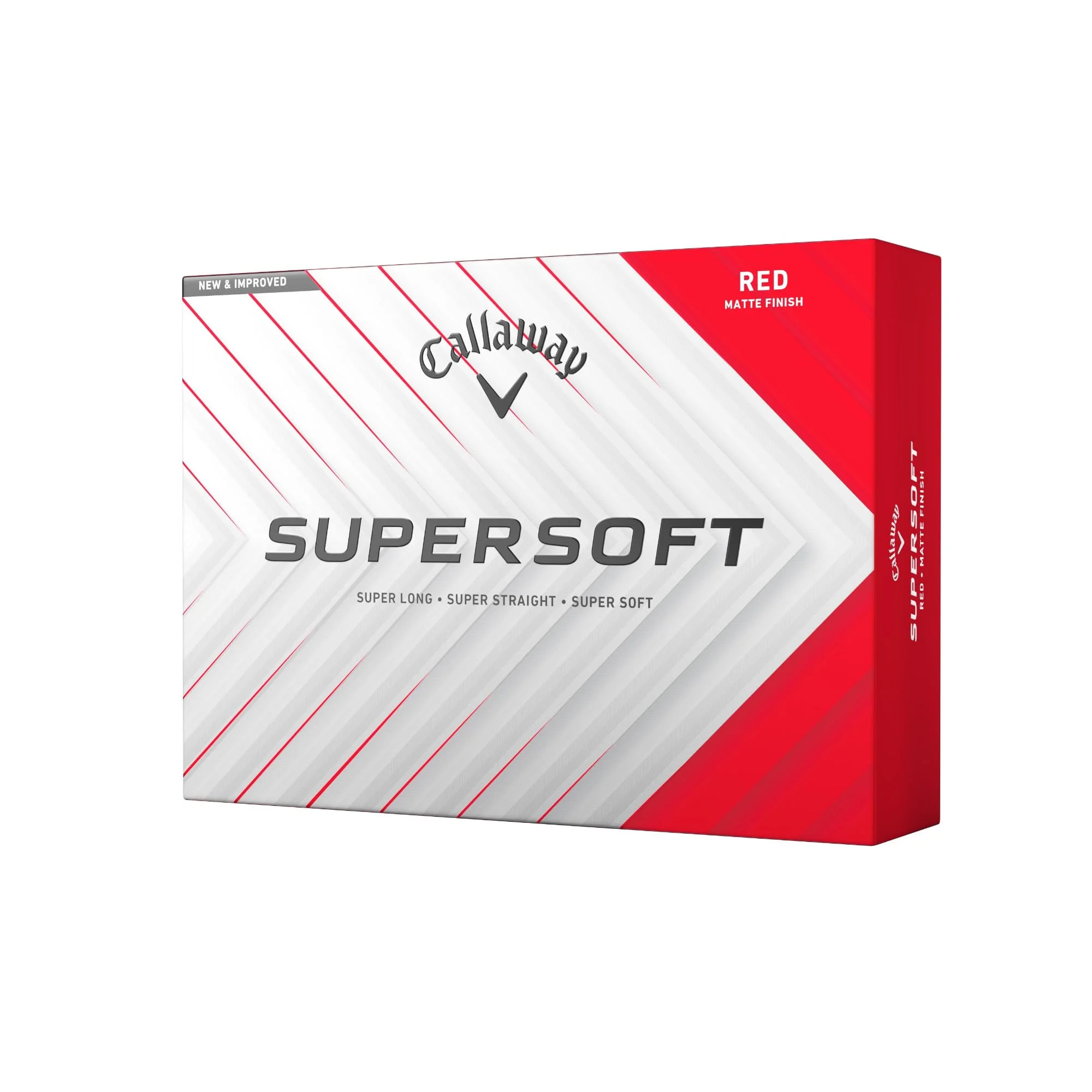
*Affiliate link. The price may vary.
The balanced combination of distance, feel, and control provided by these golf balls makes them well-suited for mid-handicap golfers striving for improvement at a modest cost.
Pros
- The driver produces responsive ball speed together with a soft feel
- Improved control of the short game with better spin around the greens
- Easier to see on the course due to the bright red color
Cons
- For aggressive swing users, the durability is lacking
- For very low handicap players who seek maximum spin, these are not ideal
- Feedback may be lacking for those who prefer a firmer ball
While testing out the Callaway Supersoft, the distinct soft feel around the greens was the first thing that stood out to us. The hyper-elastic soft fast core does aid in the rolling of the ball off the driver and also maintains the responsiveness required on chips and pitches.
The spin control provided was adequate for average speed swings. Players were able to confidently land and hold greens and were able to stop shots close to the designated target with good expendable feel during the short game.
The Callaway Supersoft also helped with losing balls in rough areas, which helped with the speed of play.
XIPEGPA Practice Golf Balls
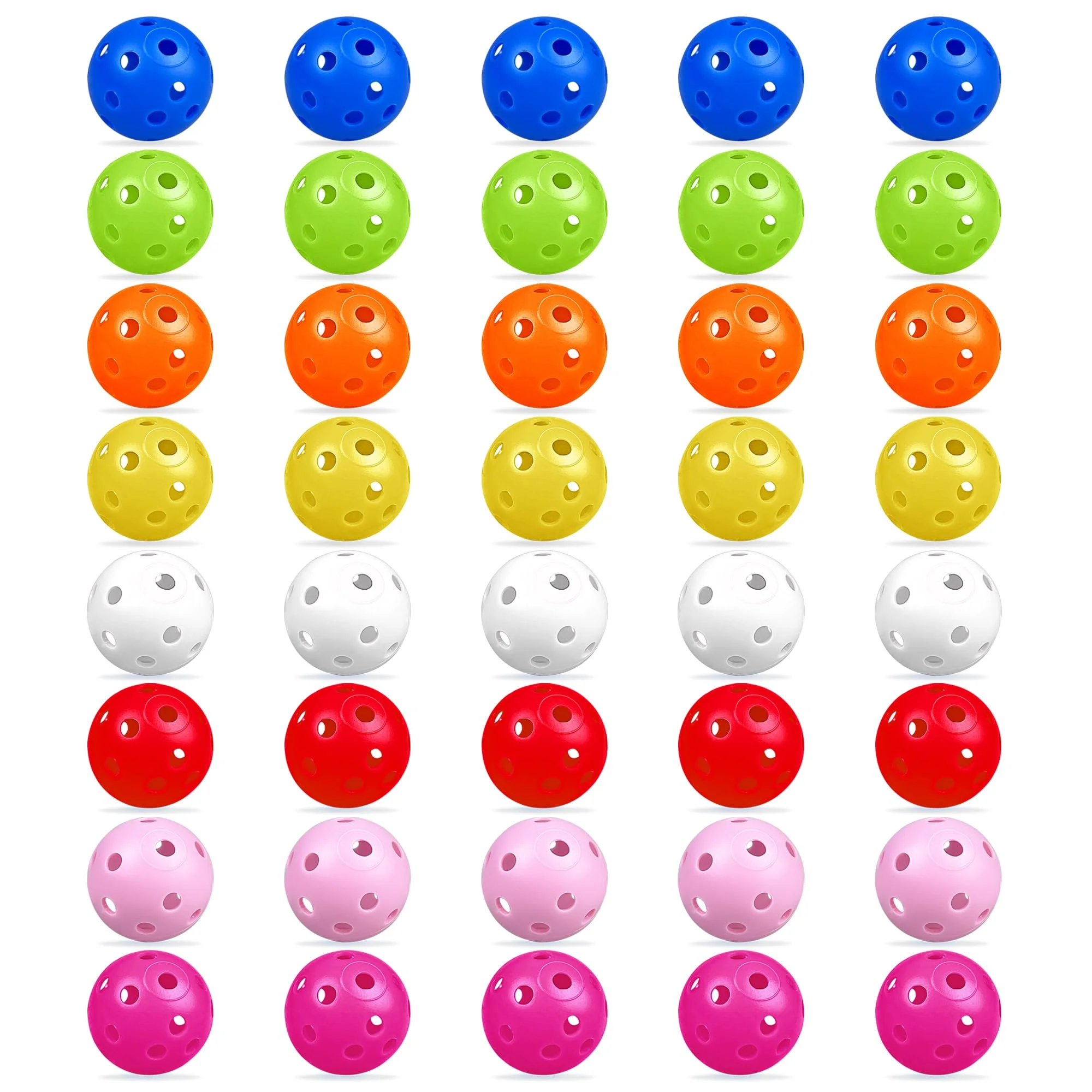
*Affiliate link. The price may vary.
These training balls are a good option for golfers looking for economical, safe practice balls suitable for both indoor and outdoor use.
Pros
- Less prone to denning due to a hollow construction
- Available in numerous colors for easy shot tracking
- Safe and lightweight for full-swing training
Cons
- Less weighted compared to standard golf balls
- Flight distance is more limited than traditional balls
- Produced spin and bounce may not be standard due to plastic construction
These balls seem safe to use during swing practice without concern for damage to the environment and clubs. The 26-hole design offers a reasonable approximation to ball flight while providing consistent feedback during practice sessions.
The bright colors were appreciated for ensuring that even in low light, the selection of shots remained effortless.
Although these do not mimic every aspect of ball flight, they are fantastic for timing and form practice at home or on the range.
Titleist TruFeel
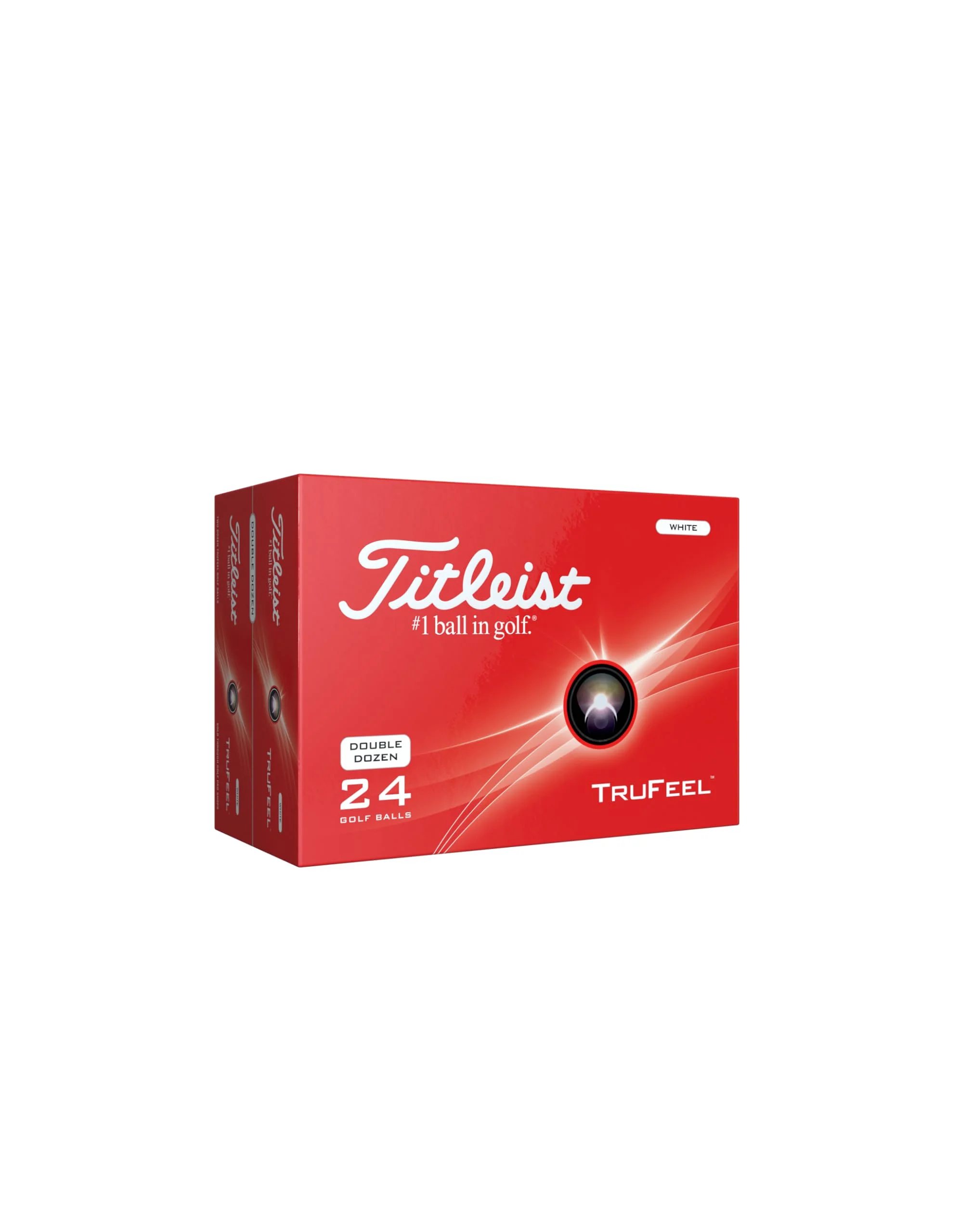
*Affiliate link. The price may vary.
We recommend the Titleist TruFeel for the average golfer who desires a soft-feeling ball that maintains dependable distance alongside good control around the greens.
Pros
Enhanced soft touch improves control and feel
Significant distance improvement while maintaining soft touch
Durable cover designed for consistent performance
Cons
- May not suit very fast swing speeds
- Limited color options
- Slightly higher price compared to basic balls
The feel of the balls immediately stood out. They provide a soft and responsive feel on delicate chips and pitch shots.
Around the greens, they also provide increased spin and control, which allows the player to stop the ball quickly.
Distance was consistent and aligned with the pricier Titleist models we played. For more moderate players, the thinner cover and new core technology definitely provide a difference.
Having played several rounds, the balls maintained cover integrity and performance, showing minimal wear, which demonstrates strong durability.
TaylorMade SpeedSoft Golf Balls 2025
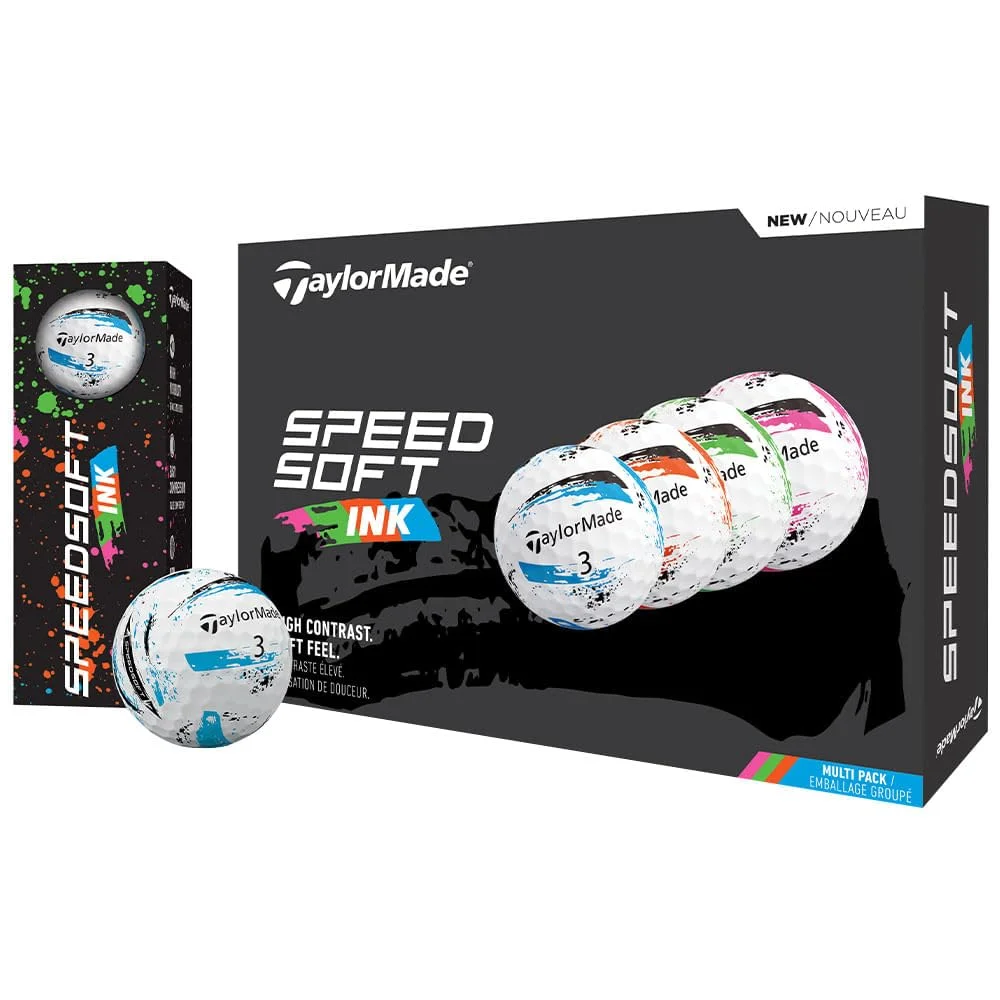
*Affiliate link. The price may vary.
With a nice balance between good distance and soft feel, these golf balls are great for most golfers who value consistency.
Pros
- Achieves good distance off the tee
- Helpful alignment markings for better putting
- Very soft feel with easy compression
Cons
- Not as sharp spin control compared to premium tour balls
- Mostly classic looks with limited color options
- Slightly less durable compared to harder-covered balls
The SpeedSoft balls are exceptional for their softness, especially during iron shots and while chipping.
Furthermore, the SpeedSoft balls felt easy to compress, aiding average swingers to maintain their steady speed while achieving effortless control.
As for the SpeedSoft balls, the putt alignment aid offered better alignment for the putt, enhancing our confidence while on the green.
Reliability was noted on the tee distance, with the ball achieving a stable flight distance and maintaining its speed due to its aerodynamic dimple design.
In comparison to premium tour-branded balls, these SpeedSoft balls lack providing the long, rough, side, and heavily spinning ball which appeals to the lower handicap players and the players who play off the tour.
Kirkland LostGolfBalls 50 Pack
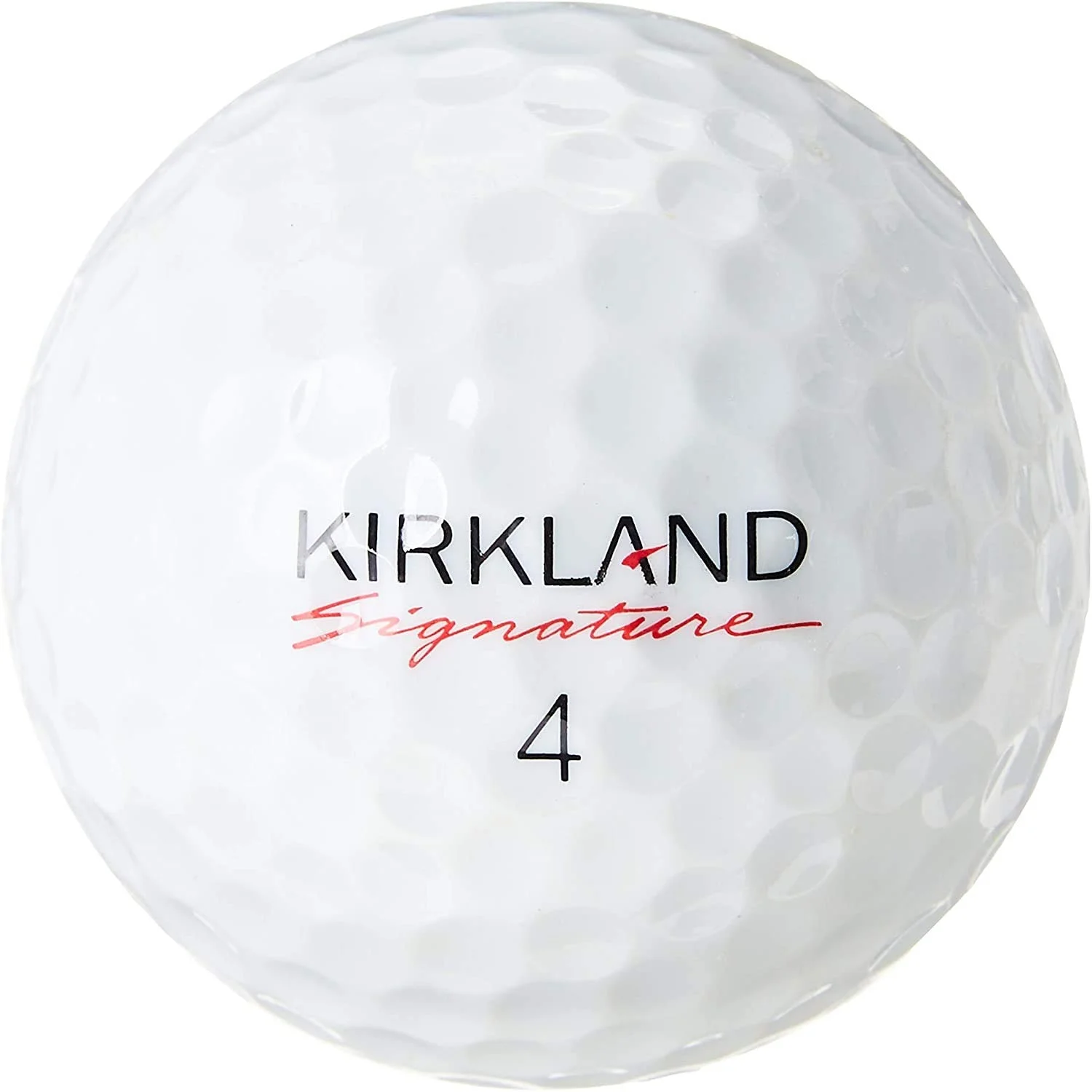
*Affiliate link. The price may vary.
These golf balls are priced such that an average golfer does not cringe while losing a few and also delivers reasonable performance.
Pros
- Softer feel delivers exceptional distance
- Balanced spin aids in consistency
- Value for money due to large pack size
Cons
- Inter-ball quality differs
- Some balls noticeably scuffed
- Reported issues with smell and packaging
Our team observed that the Kirkland LostGolfBalls pack performed solidly during gameplay, particularly in driving distance and the overall feel around the greens.
The lower compression seemed to make the shot feel more forgiving to the golfer, and the distance achieved wasn’t impacted.
Every product has its own set of issues, and in this case, there are cosmetic issues that some players would consider off-putting, such as scratches and other marks.
For competitive and even casual rounds, these issues are more than offset by the significant savings, especially when compared to other higher-priced title-branded balls.
JEWSUN Best Dad by Par Crochet Golf Ball
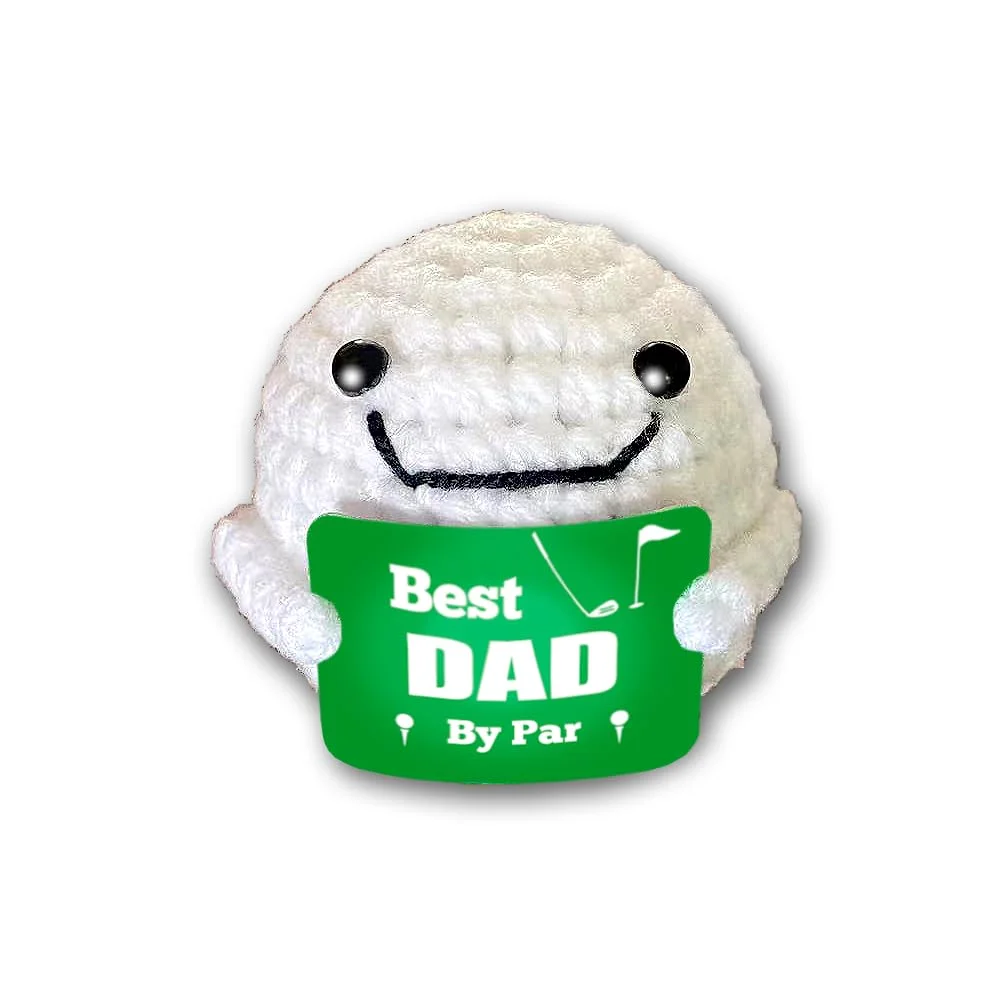
*Affiliate link. The price may vary.
While the knitted golf ball has sentimental value for many fathers, its use is far more ornamental than for actual play for the average golfer.
Pros
- Soft cotton material is pleasant to the touch
- Handmade items show the care and thought put into the design
- Due to its size, it can easily fit on a desk or shelf
Cons
- Unusable as a golf ball for real games
- Greater limitation than standard golf balls
- Not primarily meant for use; its novelty value is much higher
Though not a conventional golf ball, it is an exceptionally thoughtful present for fathers who are fond of golf. The stitches are done neatly, and the cotton yarn used is soft and of good texture.
It is a great display piece and a nice keepsake. It does not roll or fly like a conventional golf ball. It can serve as a light-hearted reminder of fatherhood and can be used as a practice session prop or as office decor.
Those looking for traditional, playable golf balls will not be satisfied with this product.
This product will, however, meet the needs of those looking for a fun gift or an item with character to keep.
Buying Guide
For average golfers, we take into consideration balance among distance, control, and feel while selecting golf balls. Striking a balance between a performance-enhancing ball and a ball that provides consistency should be a priority.
Of the various factors, compression plays a vital role. So does the player’s swing. Softer, lower-compression balls aid mid-range speed golfers, while softer, lower-compression balls hurt golfers with moderate swing speeds. Softer compression balls provide moderate control, while higher compression balls aid faster swings.
Durability and spin are affected by cover material. Ionomer covers give more distance and durability, and urethane covers provide more control on the greens.
| Feature | What to Look For | Why It Matters |
|---|---|---|
| Compression | Medium to low | Better for average swing speeds |
| Cover Material | Urethane or ionomer | Balances spin, feel, and durability |
| Construction | Two-piece or multi-layer | Distance vs. control balance |
| Spin Rate | Moderate | Prevents excessive slicing or hooking |
Frequently Asked Questions
Which golf balls perform best for players with a 15-20 handicap?
Golfers within this range benefit from balls that provide a balance between distance and control. We suggest options that have soft covers and mid-level compression to provide a soft feel, on the other hand, to provide distance.
Which golf balls should a beginner use that would help them improve their golf handicap?
High handicappers should prioritize golf balls that lessen the spin on the driver due to its slice and hook tendencies. Ideal golf balls are low compression, long distance, and forgiving, which are all features aimed at maximizing distance.
How do Titleist golf balls compare for average golfers seeking improved performance?
Titleist has the Pro V1 and Pro V1x, which are made for mid-handicap players, and with these models, Titleist is looking to help mid-handicap players perform better. These models, like all Titleist models, have distance, spin, and control balanced features, which are great for improvement.
Are there certain types of golf balls that suit the needs of novices?
Novices often benefit from cheaper golf balls that are durable and have softer cores.
These types of golf balls assist the beginner in striving for distance and reduce the erratic flight path of the ball, thereby supporting the development of consistent ball striking.
Related posts:
No related posts.
